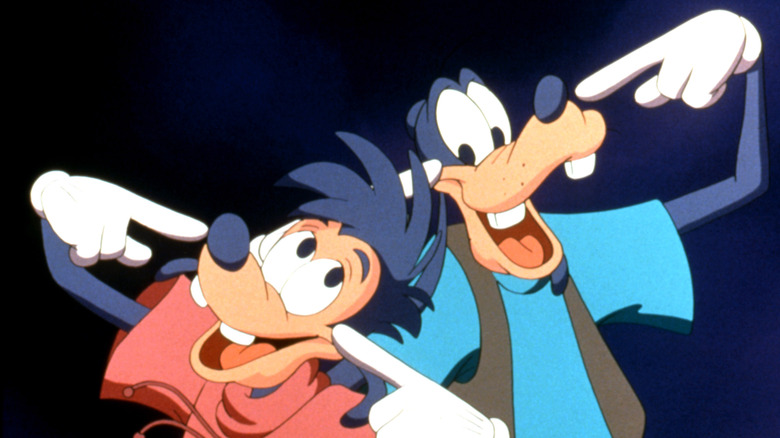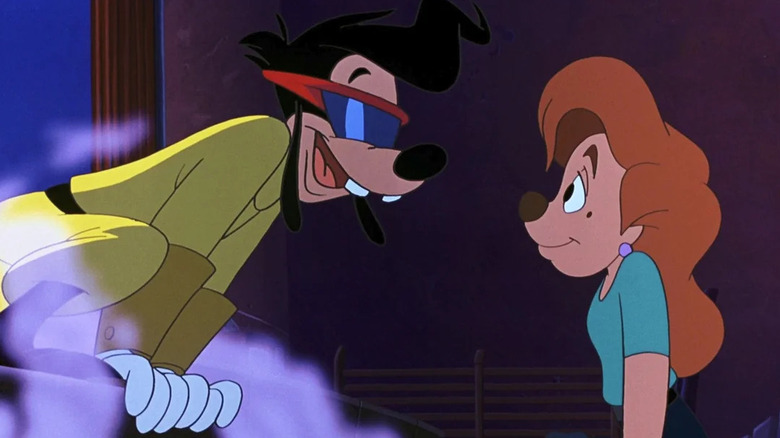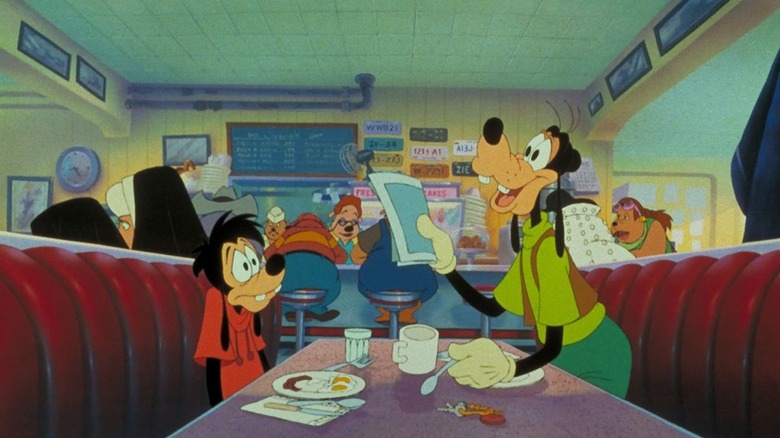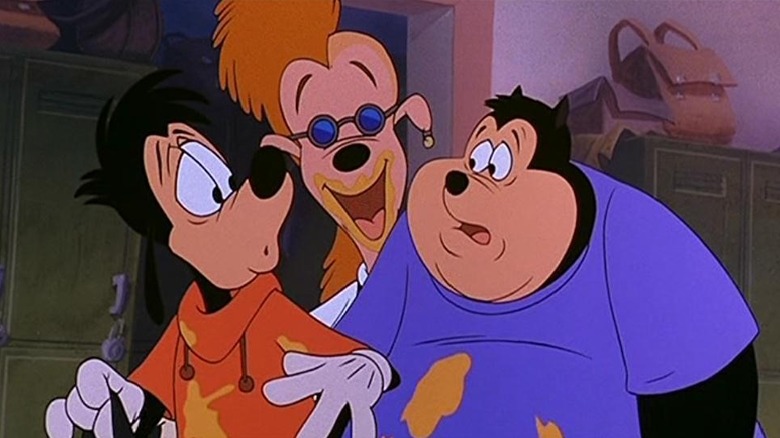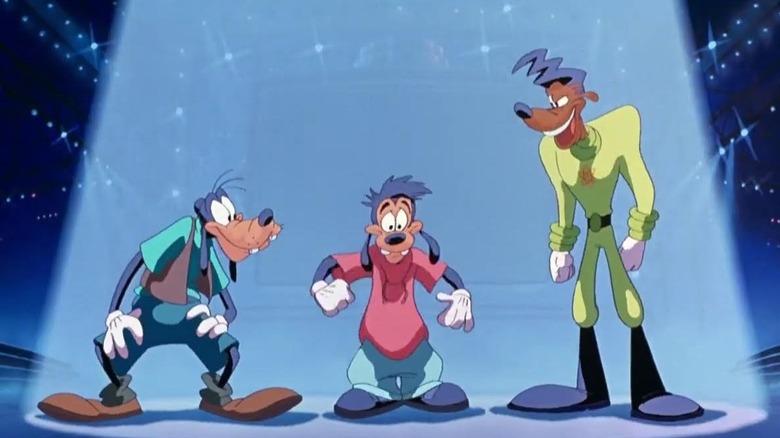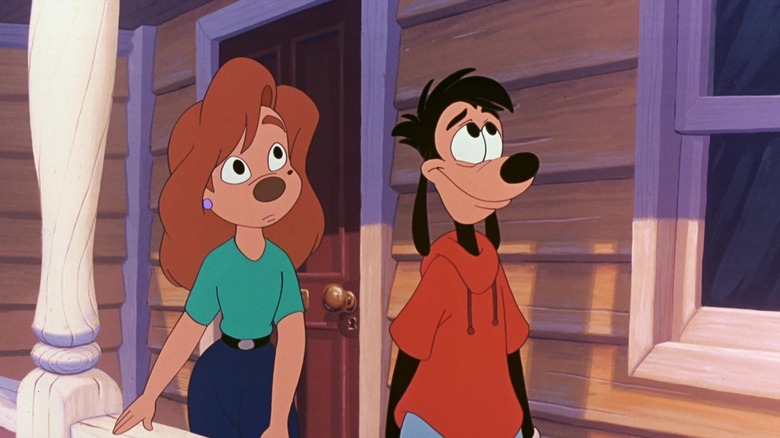30 Years Ago, Disney's Goofy Box Office Misfire Birthed A Generational Cult Classic
(Welcome to Tales from the Box Office, our column that examines box office miracles, disasters, and everything in between, as well as what we can learn from them.)
"'A Goofy Movie' is probably the most unexpected Disney film to have ever garnered cult classic status." Those are the words of Lex Briscuso writing for /Film in 2022, and she had a point. Released in 1995, the film is centered on Goofy, who was, for decades, a supporting character in the larger Disney animated universe. Yet, 30 years ago, he got to take center stage in a theatrical feature film that is a father/son tale, a road trip comedy, a musical, a love story, and at times perhaps the best animated concert film ever made.
It runs in defiance of what we often associate with a classic Disney animated movie. It also resonated with the generation of '90s kids who grew up with it, elevating it to downright legendary status over the years. Just mention the name Powerline to people of a certain age and the reaction will be akin to bringing up any other huge pop star who exists in the real world. That's why it's quite surprising to look back at the film's journey now, as it wasn't a hit at the box office — far from it, actually. Its success was almost an accident, it seems.
In this week's Tales from the Box Office, we're looking back at "A Goofy Movie" in honor of its 30th anniversary. We'll go over how the film came to be, why its theatrical release was a sticking point behind the scenes at Disney, what happened when it hit theaters, what happened in the years that followed, and what lessons we can learn from it all these years later. Let's dig in, shall we?
The movie: A Goofy Movie
The film centers on Goofy, whose son Max pulls an elaborate prank and dresses up as his favorite pop star, Powerline, to get the attention of his longtime crush, Roxanne. His plan works, but the fallout from the prank convinces Goofy that he and his son need some bonding time. So they set out on a cross-country fishing trip, just like the one Goofy took with his dad as a kid. This throws a wrench in Max's plans with Roxanne, causing tension between father and son from the outset.
This movie traces its roots to the 1992 animated series "Goof Troop," which ran for two seasons on ABC. "A Goofy Movie" was the brainchild of Disney Chairman Jeffrey Katzenberg, who helped change the face of Disney animation with "Beauty and the Beast" several years earlier. As Jymn Magon, the "Goof Troop" story supervisor who is also credited as a writer on the movie, explained in a 2020 retrospective for Vanity Fair:
"Jeffrey Katzenberg, like a lot of parents, was struggling at the time with his teenage daughter. He said, 'I couldn't figure out how to get through to her. But we ended up taking a car trip together.... Somewhere along the way, we bonded. I want a story like that.' I said, 'Okay.'"
So, Magon set about crafting a script. Before all was said and done, Chris Matheson ("Bill & Ted's Excellent Adventure") and Brian Pimental ("Aladdin") would also put in work on the script. As for the director's chair? That was occupied by Kevin Lima, who had been an artist at Disney for several years, working on films such as "Oliver & Company" and "The Rescuers Down Under."
The various versions of A Goofy Movie that never were
"I was really wanting to make a John Hughes movie in animation," Lima said to /Film in an oral history about "A Goofy Movie" from 2020. "Can we tell a more contemporary story with contemporary characters than had been told in animation up to that point? So at every turn, I was trying to make it feel like it was happening today. Well, 1995 'today.'"
Settling how best to go about that was no easy task. For one, Bill Farmer, who took over as the voice of Goofy in the late '80s, was asked to make the character's voice more "normal" initially. There were even discussions about having a big name like Steve Martin take over. That didn't happen, but it demonstrates the creative clashes that were afoot.
Case in point, the original version of "A Goofy Movie" had nothing to do with Powerline, the fictional pop star who looms over the existing film. For fans of songs like "I2I," that's truly difficult to fathom.
"The thing that was really at the heart of it was, how do you go about creating a song or songs that would come across as timeless and yet be hip and cool for the time? We had a lot of conversations about it," Bambi Moé, the film's Music Associate Producer, said to /Film in the 2020 oral history. Lima, in the same piece, explained where the inspiration for Powerline came from.
"Powerline was always a pop superstar. We were looking at folks like Prince, Michael Jackson, Bobby Brown. There's been a rumor for a long time that he's based on Bobby Brown and that Bobby Brown actually recorded some of the tracks for the film. It's not true at all."
A Goofy Movie's release was more of an obligation for Disney
Fortunately, the story chips fell where they did, but it all serves to demonstrate that the movie that eventually made its way to theaters wasn't the movie that was planned from the start. While $18 million wasn't exactly a big-budget animated film even by mid-'90s standards, it was still enough to ensure that various interests were going to have strong opinions on how the final product should look.
One particularly important element of the movie's eventual release had very little to do with the creative aspect at all. Katzenberg left his post at Disney in late 1994 after a highly public falling out with Disney's then-CEO Michael Eisner, who would later be succeeded by Bob Iger. That meant a lot of goodwill for the movie had gone out the window.
Veteran Disney producer Don Hahn explained in the Vanity Fair piece that releasing the movie in theaters at all was seen as "fulfilling a corporate legacy." Mind you, this was at a time when the studio could have just as easily probably turned this into a direct-to-video release and washed their hands of it out of spite, or perhaps to mitigate further risk. In any event, Eisner and Co. did opt to release the movie in theaters, which proved to be a very wise decision, even if it didn't look like it at first.
The financial journey
"A Goofy Movie" hit theaters on April 7, 1995, in the pre-summer release window. This was long before Hollywood would essentially extend the summer movie season to March, with massive movies like "The Hunger Games" and "Batman v. Superman" arriving for the spring break crowd. The date summarized Disney's view of the movie: They weren't exactly dumping it, but they didn't give it a prime date, either.
Michael Bay's breakout action flick "Bad Boys" ($15.5 million) topped the box office that weekend. Disney's animated Goofy vehicle had to settle for second with an okay-but-not-great $6.1 million. To make matters worse, the movie hardly had a presence overseas, so Disney was relying almost entirely on domestic ticket sales to justify the expense.
While Lima's movie held reasonably well, in no small part due to a lack of overly stiff competition, the somewhat low opening weekend number coupled with a lack of international box office sealed its fate. By mid-May, when "Crimson Tide" arrived, the movie was barely holding onto a spot in the top ten and was soon out of theaters entirely.
"A Goofy Movie" finished its theatrical run with $35.3 million domestically and no meaningful ticket sales internationally. That was barely enough to recoup the production budget, if that, not to mention any marketing expenses Disney incurred. At least in the short run, this was a disappointment. But it didn't take long for that narrative to change.
A Goofy Movie became a hit for Disney on home video
"It started for me a couple of months after the movie had been released on videotape," Lima recalled in that 2020 Vanity Fair piece. "It did not catch the world on fire. I had read an article where this family was talking about how they had a ritual every night in which they raised their glasses before they ate dinner and said, 'To the open road.' And I realized, Wow, this thing has outreaching arms in a way I never thought it possibly could."
"A Goofy Movie" would go on to defy Disney's expectations. Once the movie made its way to home video, things changed rapidly and dramatically. It certainly didn't hurt that it would later make its way into regular rotation on cable, particularly The Disney Channel. Its audience grew over time, and that audience remains passionate. Farmer, speaking to /Film for the 2020 oral history, revealed just how deep the love for this movie runs.
"Over the years, many fans have come up to me — probably more than any other project I've ever worked on, and I've done close to 4,000 projects for Disney — and 'A Goofy Movie' stands out among all of them with the fans. They always come up and say, 'I couldn't talk to my dad, but we saw this movie, and it became our movie.' They'd watch it every year or listen to the soundtrack together."
The lessons contained within
Disney eventually made a follow-up in the form of "An Extremely Goofy Movie," which was released in 2000. It wasn't as successful or as beloved as the original, but its mere existence demonstrates just how successful the original was on a longer timeline. As further evidence, "A Goofy Movie" was released on Blu-ray as a Disney Movie Club exclusive before the club shut down last year. (Those Blu-rays are going for upwards of $120 on eBay these days.)
To say that "A Goofy Movie" became a success after its theatrical run would be an understatement. Ask anyone of a certain age today about it and their eyes are likely to light up. There was even an entire episode of the FX series "Atlanta" fictionalizing the making of the movie. If that doesn't say generational classic, I don't know what does.
The eternal lesson here is one that takes on new meaning in the streaming era: Sometimes, a movie just needs time to find its audience. The box office isn't the final word when it comes to a given movie's success. It's hugely important, yes, but things can have a longer life if the industry allows it to happen. In the age of streaming, it's harder for cult classics to emerge. Let's just hope it's not impossible. As Powerline might say, you gotta stand out above the crowd.
